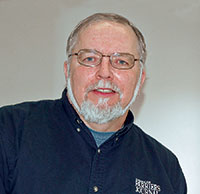Perhaps simplicity — like beauty — is in the eye of the beholder; particularly when it comes to horseshoeing.
I’ve heard a lot of farriers champion the so-called K.I.S.S. (keep it simple stupid) method for horseshoeing. But I’ve heard some of the same farriers then describe their “simple” system. It includes assessing the horse’s conformation, age, work, environment, hoof-horn quality, hoof-wall thickness, sole type, frog health, past history, any current or recent lamnesses or problems, trainer requirements and rider needs and style.
Then they take the old shoe off, clean and trim the foot, select the right shoe, shape it properly, fit it to the foot, nail it in place, then clinch the shoe, finish the foot, make it pretty and move on to the next foot.
Am I the only one that missed the simple?
Complex Thinking
During the 2013 International Hoof-Care Summit, Denton, Texas farrier Chad Chance gave a presentation on shoeing reining horses, and Moreno, Calif., farrier Tim Shannon spoke on shoeing 3-day eventers. Each of them at one point or another mentioned trying to keep things simple. But you only had to listen to a little bit of either presentation to understand that the job is anything but simple.
Chance, who has been shoeing reining horses for 29 years, was asked if he shoes a reiner more to enhance its strengths, or to compensate for its weaknesses.
“I shoe for its strengths,” he answered, without hesitation.>
Chance went on to explain that a reiner will get its points in an event from what it does well. That, he said, is what is most important to an owner or rider. When addressing weaknesses, it’s more a matter of trying to minimize the negative effect they have on a horse’s score.
Again, it sounds simple. But to do what he’s describing, Chance had to understand not only the scoring of reining events, but how a particular horse’s strengths and weaknesses are likely to affect its scoring.
Gee, I think I’m missing the simple again.
Farriers like Shannon who shoe 3-day eventers, must trim and shoe horses who will be competing in dressage, cross-country and jumping, over 3 (and sometimes just 2) days. Shoeing horses for any of these disciplines involves subtle and not so subtle requirements. An eventer shoer has to come up with some kind of a formula to enable a horse to perform well in all three.
During his presentation, Shannon was asked if he gives greater weight to the needs of any one of the three disciplines.
“Cross-Country,” he answered, like Chance, without hesitation.
Shannon explained that an eventer is most likely to become sore or develop lameness during the cross-country portion of the competition. With that in mind, he shoes eventers for cross-country — but of course has to keep in mind that the horse will also be competing in dressage and jumping.
No doubt about it, this is a simple job.
Let Clients Know
What a lot of farriers are obviously saying when they extol a K.I.S.S. approach, is that they try to take as logical and simple an approach as possible to a very complicated task.
There’s nothing wrong with that approach. But from a marketing perspective, don’t hesitate to let your clients know all the factors that you have to take into consideration in your K.I.S.S. system — particularly if they start beating you up over what you charge or when you’re telling them about a necessary increase in your hoof-care prices.
Once you tell them a little about your method, I’ve a sneaking suspicion they won’t find it that simple either.
Then maybe they’ll place a higher value on your skills.








Post a comment
Report Abusive Comment